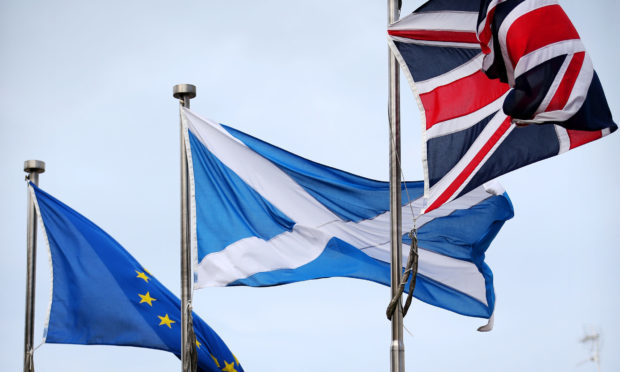The Scottish Government is going to need more than an emergency budget come Brexit.
Scottish policy will be profoundly affected by quitting the EU – deal or no deal.
A good example of this is how we fund third level education.
Back in the early 2000s, the SNP opposed the Labour-Lib Dem coalition’s policy of tuition fees.
For some it was a principle, for others a pragmatic way to earn political capital.
In a way that nobody predicted at the time, third level education funding would prove a key issue in the drive to an independence referendum.
By standing against fees, the SNP weakened Labour’s grip on young voters.
This new support was vital in 2007, when the SNP won by a hair’s breadth, thanks in part to manifesto promises to scrap fees and pay off student debt.
The SNP’s share of the under-30 vote was at its highest ever.
However, the policy was problematic – promising things to students was expensive and ran into European law.
The plan to scrap student debt was shelved, with remarkably little voter anger, while the bid to end tuition fees became awkwardly antagonistic.
The EU said that because Scotland was a ‘regional’ government, its policy could apply to residents of Scotland but not students from other UK nations.
This was advantageous as it made the policy a lot cheaper, but ran counter to the SNP’s idea of all inclusive, non-discriminatory ‘new’ nationalism.
Making English students pay when Scots didn’t looked like the pettiest of all petty grudges.
The excuse was that the EU set the rules.
This line was accepted, and from then on the SNP never let anyone forget that it had scrapped the unpopular fees.
This appeal to the young would continue into the referendum, where Yes won the youth, No the over-50s.
But as of midnight on March 29, those rules will end.
It is quite possible that, with the Scottish Government’s commitment to human rights and equality, there will be no choice but to include all UK students in the free tuition policy.
The government has pledged to give free tuition to all EU students currently studying, and for those who come to Scotland up until the 2019-20 academic year.
There are around 20,000 EU students at Scottish universities.
There has been no mention of the much larger cohort of students from other UK nations.
The total, including Scots, of UK students at Scottish universities is around 185,000.
I asked the Scottish Government whether all UK students would now be eligible for free tuition after Brexit and had ministers discussed this matter?
“We have previously confirmed that eligible EU students commencing courses in academic year 2019-20 will benefit from free tuition for the duration of their courses.
“We are in discussion with the higher education sector as to support beyond this period in the context of uncertainty caused by Brexit, which is a huge risk to the sector.
“Decisions related to funding after Brexit will form part of future budget considerations.”
That’s how Scottish Government spokespeople speak – in a deliberately vague way designed to promote a message and avoid clarity.
In translation it means: we have thought about the EU students because it suits our messages about wanting to stay in the EU, and may go even further in welcoming them, but we are not telling you if a) there is a legal requirement to include all UK students in the free tuition scheme or b) we have a plan to deal with this.
“Free tuition” actually means the Scottish Government paying universities out of public funds.
The intent of the policy, political advantage aside, was good – it echoed Scotland’s historical role in providing universal free education.
Its effect was ambiguous – while student numbers are at an all-time high, free tuition favours wealthy families, according to the acknowledged independent expert, Lucy Hunter Blackburn:
“Free tuition in Scotland is the perfect middle-class, feelgood policy,” she says.
“It’s superficially universal, but in fact it benefits the better-off most – and is funded by pushing the poorest students further and further into debt.”
Thus, it may be a good thing that Brexit forces the government to review this policy.
However, that is to misunderstand the nature of the SNP administration.
The SNP is always behind the curve policy-wise because it doesn’t like to challenge voters.
It is far more likely to resist any change post-Brexit in the belief that if it behaves like a good child by obeying all the old rules, then the EU might look on it more favourably.
Which is naive, and foolish.
Keeping to regulatory or trade standards is one thing, but post-Brexit Scotland must act quickly to maximise the benefit of not being under EU governance rules.
It is an opportunity to fix landmark policies which sounded good in speeches, but did not deliver as intended.
If the Scottish Government delays, it’s likely to cost us all a lot of money, and in defence of a policy which may not even work.










